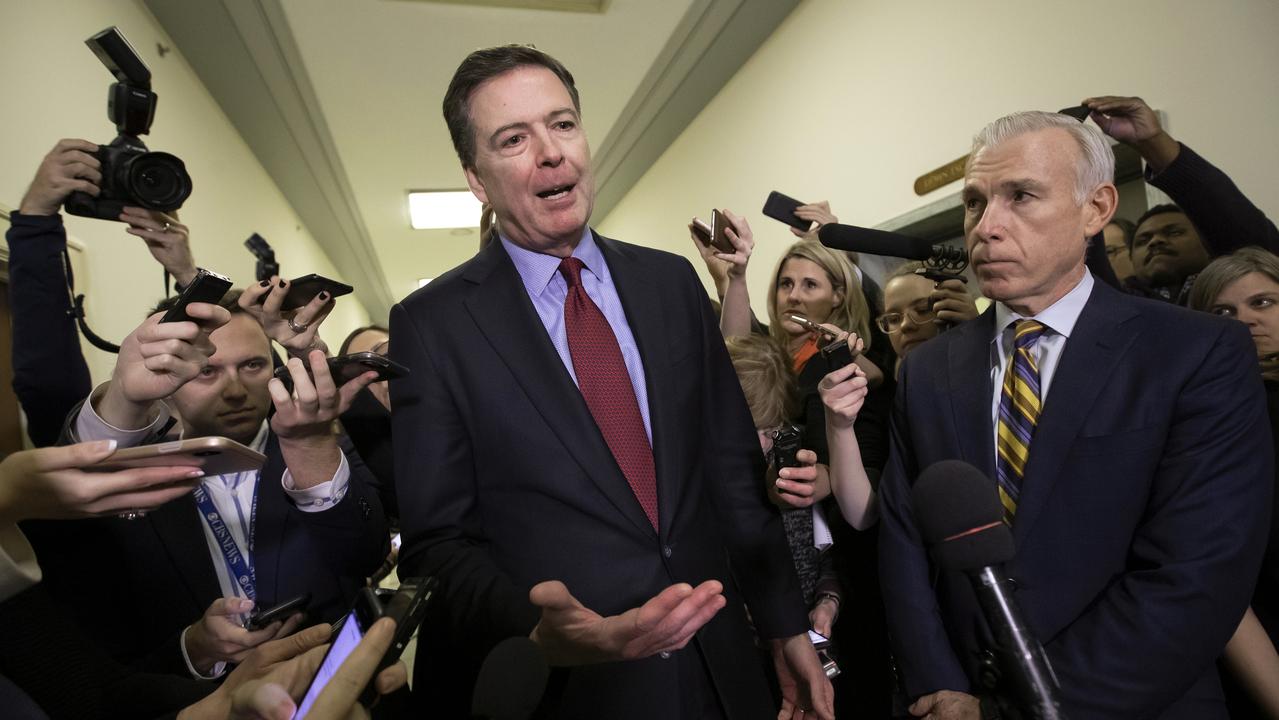Wanted: carbon goes to ground
COAL will never be clean, but capturing and storing emissions is the next step.

THE environment editor at The Guardian newspaper, John Vidal, is fond of saying his home garage is Ferrari ready.
It is a reference to laws that, as in Australia, require all new power stations in Britain to be CCS ready: capable of capturing and storing their carbon emissions at some point in the future.
Vidal's inference is that there is as much chance of a Ferrari gracing his garage as there is of coal-fired power stations one day being emissions free: not likely.
Vidal may have his reasons for doubt, but his view reflects the fact it is very fashionable in environmental circles to be dismissive of carbon capture and storage as a realistic technology to help stop the world from overheating.
This is despite the UN's Intergovernmental Panel on Climate Change and the International Energy Agency saying CCS will be central to success in cutting the world's carbon emissions.
And this is because, in the rapidly expanding electricity markets of China and India, coal use is forecast to keep growing strongly well into the future.
This is not to dismiss the strong growth that is also taking place in less carbon-intensive power generation technologies such as nuclear, hydro, wind and solar.
But whatever happens, coal is forecast to be around for a long time to come. Opposition to CCS clearly owes as much to ideology as technological reality.
In Australia, the Greens are explicit about their desire to phase out coal.
Greens deputy leader Christine Milne told the recent Economic and Social Outlook conference co-sponsored by The Australian and the Melbourne Institute: "We set the goal for 100 renewables, a de-carbonised economy by 2040 and we go for it. Maintaining what people have now on a fossil fuel economy is fools gold."
Milne says she is prepared to bet Australia's economic future on research and development, but not, it seems, in the area of CCS.
Greens leader Bob Brown is unambiguous: "So let the multi-billion-dollar coal industry pay for its own research and not pilfer the public purse over that while we get on with supporting solar power and the alternatives we want to see grow here in Australia."
Their views put them in the same camp as Greenpeace, which says CCS is "intrinsically incompatible" with the sustainable development of the host country.
Internationally, not all environment groups are opposed to carbon capture and storage.
The World Wildlife Fund has called for the rapid deployment of carbon capture and storage demonstration plants worldwide, including in Australia.
In retrospect, those people driving research and development in carbon capture and storage concede it was a mistake to allow the coal industry to adopt and brand the technology as "clean coal".
Put simply, very few people accept that there is anything clean about coal. But the results from CCS research are promising.
According to Barry Jones, of the Australia-based and government-funded Global CCS Institute, there are 71 large-scale integrated CCS projects across the world, eight of which are in production.
CCS involves capturing the carbon emissions from industrial processes such as making cement, fertilisers or burning coal or gas to generate electricity.
The captured carbon emissions can be stored deep underground in geological formations such as saline aquifers or locked up in other products, such as road aggregate or algae as a feedstock for biofuels.
Options for capturing carbon emissions are being evaluated worldwide. There are two basic approaches to capture:
One is pre-combustion, where coal is altered in some way before it is burned, and the other is post-combustion, where the carbon is captured after the coal or gas has been burned.
Research has shown that carbon capture is possible through either of these approaches, but the challenge is to make it cheaper.
In Australia, the federal government's $1.7 billion CCS flagship program is focused on storage.
A geological survey has confirmed that more than 120 million tonnes a year of Australia's future carbon dioxide emissions can be avoided by the capture of CO2 from 10 emissions hubs.
The survey found that the east of Australia has aquifer storage capacity for 70 to 450 years at an injection rate of 200 million tonnes per annum, whilethe west of Australia has a capacity for 260 to 1120 years at an injection rate of 100Mtpa.
The capacities were estimated using a probabilistic analysis similar to that used for petroleum resource estimation and are considered to be highly conservative.
"We know there is sufficient storage, what needs to be done is the more detailed work on particular projects," Jones says.
Some of the highly suitable geology for underground storage is located close to existing electricity infrastructure. This includes the Latrobe Valley in Victoria and Collie in the southwest of Western Australia. Large potential also exists in Queensland and NSW but more work is needed.
The Australian government announced in June that it had selected the Collie South West Hub project in Western Australia for funding under the CCS Flagships Program.
The base case for the Collie project aims to capture about 2.5Mpta of CO2 from an industrial source south of Perth.
The government is providing $52 million in funding to support the studies required to move the project to the next phase of decision making. This includes the completion of a detailed storage viability study.
Initial studies have identified the Lesueur formation in the southern Perth Basin as the best potential CO2 storage site and community consultation is now under way.
The Australian government also announced it would continue to progress other large-scale Australian CCS projects, including the CarbonNet CCS hub project in Victoria and the Wandoan project in Queensland.
The government is also funding a $61m National CO2 Infrastructure Plan to study sites potentially suitable to store captured CO2 and speed up the development of transport and storage infrastructure near major emission sources.
The plan includes development of a national CO2 drilling rig deployment strategy and an assessment of infrastructure needs.
Australia will also host the world's largest CCS project when the Gorgon gas field comes into production off the north coast of Western Australia.
As part of the Gorgon development, so-called fugitive carbon emissions -- the CO2 that comes to the surface with the gas -- will be reinjected and stored in the original geological structure from which it came.
Advanced CCS projects have been commissioned in the US and Canada, and the European Commission has mandated states to legalise the storage of carbon dioxide.
Britain, Spain, France, Denmark, Ireland, Belgium, Latvia, Lithuania, Luxembourg, Austria, Romania and Finland adopted the EC's directive in time for the June 25 deadline.
This month, the German parliament granted its approval for testing of CCS technology, despite public objections that the potential dangers of the technology had not been adequately addressed.
Herbert Huppert, Australian-born scientist and foundation director of Cambridge University's Institute of Theoretical Geophysics, says the risks of carbon sequestration are well understood.
Huppert was invited last month to deliver the Royal Society's most prestigious annual lecture. He used it to outline the role the CCS could play in helping guard against climate change.
According to Huppert, the widespread adoption of CCS is inevitable. He says the safety of storage depends on the CO2 being kept more than 1km below the earth's surface.
Jones agrees and says he believes CCS will be among the least costly ways of reducing emissions in the longer term.
"Policies that put a price on carbon are a necessary part of the overall response, but for CCS what you need is a significant price," Jones says.
"In the interim it is important for government to provide support for the research and development phase so that the technology can be demonstrated and innovation can occur."
As with other high-cost, carbon-abatement technologies, the timeframe for the introduction of CCS will depend on the trajectory of the carbon price.
"It is not low-hanging fruit; it will probably come into the money from 2030 onwards," Jones says.
"Energy efficiency improvements will come first but we will eventually need CCS to be a significant part of the solution."
With significant government funding in place it is debatable whether CCS is better off within or outside of the federal government's Greens-sponsored $10bn clean energy fund.
Julia Gillard says the government remains committed to CCS research and development but left it under the control of Energy Minister Martin Ferguson rather than within a broader climate change portfolio.
According to Peter Cook, of the Co-operative Research Centre for Greenhouse Gas Technologies (CO2CRC) there is a danger of being left outside of the broader government response.
CO2CRC is a joint venture comprising participants from Australian and global industry, universities and other research bodies, including New Zealand, as well as federal, state and international government agencies.
"If we do not include CCS in the overarching clean energy package and the Clean Energy Finance Corporation, we run the risk of taking a highly polarised approach to lowering our carbon footprint," Cook says. "Without inclusion of CCS there is no solution to the greenhouse issue."
Cook says CCS is not just about coal, adding that it is highly relevant to decreasing emissions from all fuel stocks, including biomass and gas. There are also opportunities for combining CCS with geothermal power and algae sequestration.


